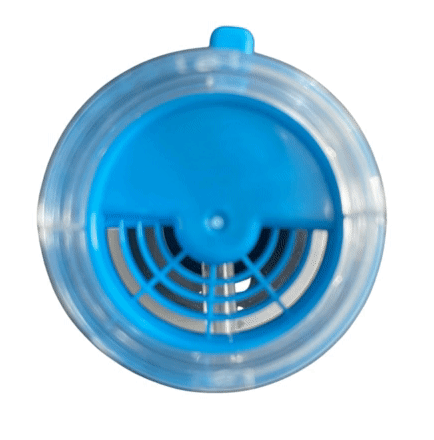In the previous post, Exercise-Induced Asthma Management via AYO Breathing Trainer. It concluded that Physical activity, Cold and Dry air are the more likely causes of Exercise-induced Asthma.
If we think slightly deeply, it is easy to pinpoint that the culprit for Exercise-induced Asthma is too much air entering the lungs. Thus the most effective strategy is to limit the air intake to the lungs in the first place. This is exactly what AYO BT is designed for.
AYO BT works by reducing the air inlet via a dial on its BTi module, which has 11 settings, and each of these settings can be related to a typical size of a nostril. For example, Setting 2 relates to ½ of a nostril, Setting 4 relates to 1 nostril, and so on.
From a flow dynamics point of view, when the cross-area of an airpath is smaller, the flow resistance for a given flow rate is higher. So the reduced air inlet will naturally promote slower and longer breathing, which activates the diaphragm via the nose allowing air to pass the lower section of the lungs, where the gas exchange will be more efficient than the top section of the lungs due to gravity bringing more blood there. Due to more efficient gas exchange, the required oxygen via breathing is reduced, and this will further reduce the air intake. Due to the slower and longer breathing via the nose, the cold and dry air also has more time to be warmed by the upper airway.

Furthermore, the mask of the AYO BT is designed to extend the natural airway, where some CO2 from each breath is retained in the mask and then rebreathed, this helps increase the brain’s tolerance to CO2 which makes you have less desire to breathe.
The mask can also help keep some of the warm and moistened air from each breath, which conditions the cold and dry air before reaching the lungs.
In summary, AYO BT is very effective to reduce air inlet, helps warm and moisten the air to breathe, promotes nose breathing, and train for diaphragmatic breathing. When used correctly, it could dramatically reduce the likelihood or severity of Exercise-induced Asthma.
HIIT is a very effective and popular training for elite athletes or experienced sports enthusiasts. However, HIIT naturally demands a high level of breathing, which would put an extra burden on asthmatics whose airways are already more sensitive to a large amount of air, especially cold and dry air.
The strategy of this program is first to use AYO BT to condition breathing with a smaller air intake at warm-up, then wear AYO BT but adjust it to a higher level of air intake for the actual HIIT, and finally after the HIIT, resume the smaller air intake setting for a cool-down. Here is the program:
Condition the breathing before HIIT
- Adjust the air intake Dial to Levels 2 – 4.
- Wear the AYO BT and do a warm-up jog for 10 – 15 minutes.
During HIIT
- Adjust the air intake Dial to level 6 or higher.
- Wear AYO BT throughout the HIIT.
Cooling down after HIIT
- Adjust the air intake Dial back to Levels 2 – 4.
- Wear AYO BT for a 5 – 10 minute cool-down jog.
- Reduce breathing with AYO BT right after the HIIT session allowing quick recovery from the workouts while helping prevent Exercise-induced Asthma.
